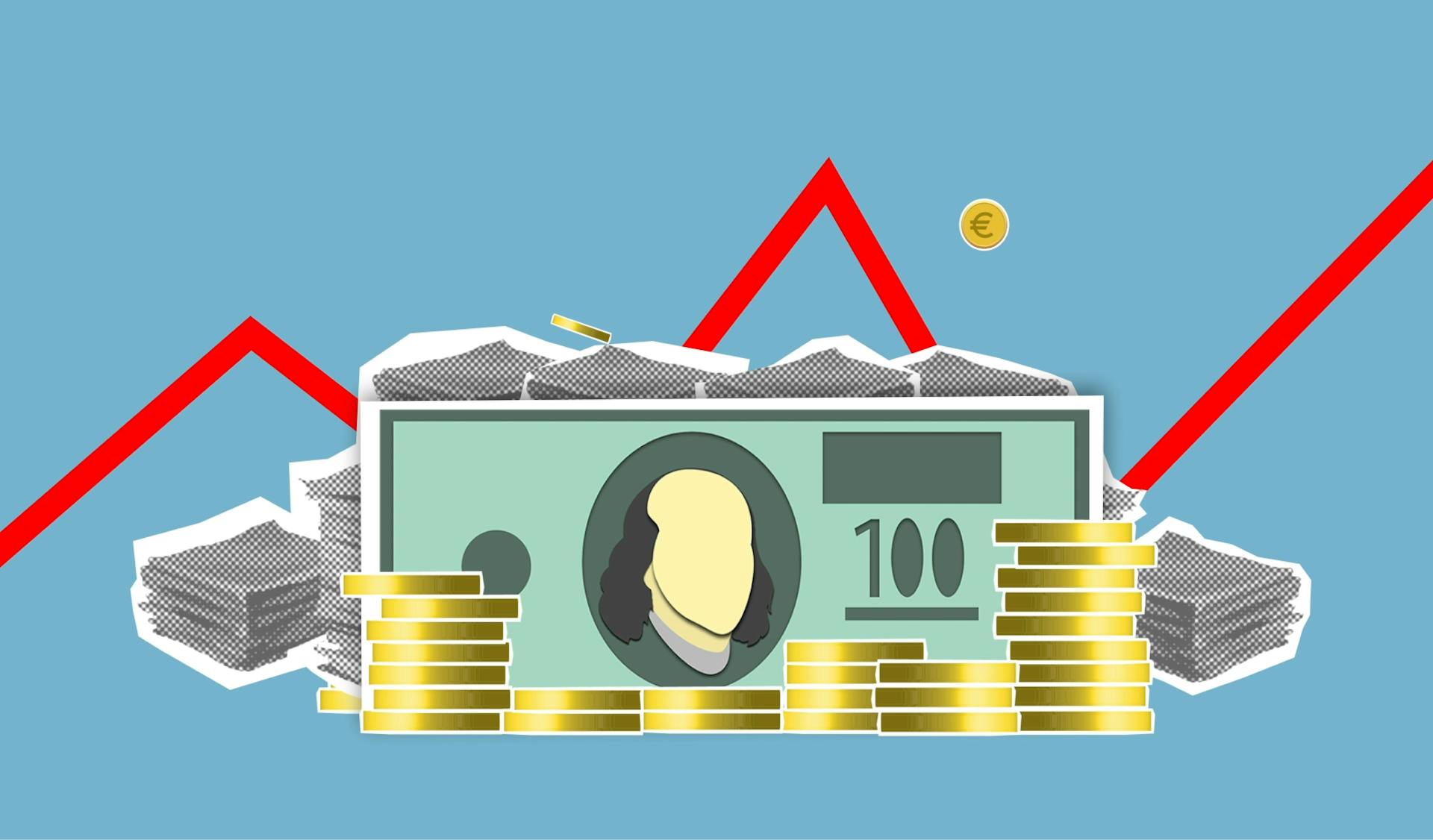
A company's capital structure is a crucial aspect of its financial management, and getting it right can make all the difference between success and failure. By definition, optimal capital structure refers to the mix of debt and equity that a company uses to finance its operations.
The ideal capital structure varies from one company to another, depending on factors such as industry, size, and growth stage. For instance, a startup may rely heavily on equity financing, while a mature company may opt for a more balanced mix of debt and equity.
A company's capital structure has a direct impact on its cost of capital, which in turn affects its profitability and competitiveness. Research has shown that companies with an optimal capital structure tend to outperform those with a suboptimal structure.
What Is Capital Structure?
Capital structure refers to the mix of different sources of funding that a company uses to finance its operations and growth.
A company can have a mix of debt and equity financing, which are the two main components of capital structure.
Debt financing involves borrowing money from lenders, such as banks or bondholders, and is typically used to finance short-term needs or large projects.
Equity financing, on the other hand, involves issuing shares of stock to raise capital from investors.
The optimal capital structure is the combination of debt and equity that maximizes a company's value and minimizes its risk.
A company's capital structure can have a significant impact on its financial performance, as excessive debt can lead to high interest payments and reduced profitability.
Take a look at this: The Debt Snowball Method Involves . . .
Calculating
Calculating your optimal capital structure is a crucial step in maximizing your company's value. It involves determining the debt-to-equity ratio that minimizes your cost of capital.
To do this, you can use financial models such as the Modigliani-Miller theorem, the trade-off theory, and the pecking order theory. These models take into account various factors, including business risk, tax rate, financial risk, profitability, growth rate, and market conditions.
Readers also liked: Trade-off Theory of Capital Structure
A lower weighted cost of capital (WACC) results in a higher firm valuation, while a higher WACC leads to a lower firm valuation. This is a direct relationship, making it a key consideration in calculating your optimal capital structure.
The optimal capital structure reflects the trade-off between the benefits of using leverage and the risk of relying on it. This means finding the right balance between debt and equity to minimize your WACC and maximize your firm's value.
Here's a simple summary of the relationship between WACC and firm valuation:
- Lower Cost of Capital (WACC) → Higher Firm Valuation
- Higher Cost of Capital (WACC) → Lower Firm Valuation
What Determines It
The optimal capital structure of a company is influenced by several key factors. One of the most important is the corporate lifecycle, where companies tend to shift towards a greater proportion of debt as they mature.
Business risk is another crucial factor, as companies with high business risk may prefer a lower level of debt to avoid financial distress. This is because business risk refers to the risk associated with a company's operations, and high business risk can lead to financial difficulties.
See what others are reading: The Dhandho Investor the Low-risk Value Method to High Returns
Tax rate also plays a significant role, as interest payments on debt are tax-deductible. This means that companies in high tax brackets may prefer a higher level of debt to take advantage of the tax shield.
The cost of debt is initially lower than the cost of equity, as interest expense is tax-deductible, whereas issuances of dividends to shareholders are not. This creates a "tax shield" that can benefit companies with high tax rates.
A company's optimal capital structure is also influenced by its lender risk-appetite, or tolerance. Risk-averse lenders, such as banks, prioritize capital preservation and may be hesitant to provide debt to early-stage companies with high risk profiles.
Here are some key factors that influence a company's optimal capital structure:
- Corporate lifecycle
- Business risk
- Tax rate
- Lender risk-appetite
- Agency costs
- Bankruptcy risk
These factors can interact with each other in complex ways, making it challenging to determine the optimal capital structure for a given company. However, by understanding these key influences, companies can make more informed decisions about their capital structure and reduce the risk of financial distress.
Cost of Capital
The cost of capital is a crucial aspect of determining an optimal capital structure. It's the minimum required rate of return for shareholders and lenders, with the cost of equity being higher than the cost of debt due to the tax-deductible nature of interest expense.
In simple terms, the cost of debt is lower because interest payments are tax-deductible, whereas issuances of dividends to shareholders are not. This means that debt is a cheaper source of financing, but it also introduces financial risk and the risk of bankruptcy.
The cost of equity, on the other hand, is higher because equity shareholders are not guaranteed any income and are last in line to receive funds in the event of default and liquidation. This makes equity a riskier investment than debt.
A key point to consider is that the cost of debt is not necessarily the optimal choice for a company's capital structure. While it may be cheaper, it also introduces fixed costs and loan covenants that can limit a company's flexibility.
Additional reading: Can You Get Arrested for Not Paying Credit Cards
In fact, research has shown that the optimal capital structure is often below 100% debt, with a mix of debt and equity providing the best returns. This is because high levels of debt increase the risk of bankruptcy and financial distress, which can negatively impact shareholder wealth.
The following table illustrates the risks associated with high levels of debt:
In conclusion, the cost of capital is a critical component of determining an optimal capital structure. By understanding the differences between the cost of equity and the cost of debt, companies can make informed decisions about their financing strategies and minimize the risks associated with high levels of debt.
See what others are reading: Cost Method Treasury Stock
Capital Structure Theories
Theories of capital structure are essential in determining a company's optimal capital structure. The Modigliani-Miller theorem states that, in the absence of taxes, bankruptcy costs, and asymmetric information, a company's value is unaffected by its capital structure.
The trade-off theory of capital structure suggests that there is an optimal level of debt that balances the benefits of debt (tax shield) and the costs of debt (financial distress). The optimal capital structure is determined by the point at which the company's value is maximized and its cost of capital is minimized.
On a similar theme: The Optimal Capital Structure Has Been Achieved When The:
The static trade-off theory assumes that the value of a company may be increased by the existence of a tax shield, but as debt in the financial structure of the company increases, so do the costs of financial distress. The formula for the value of a leveraged company looks like this: V_L = V_U + t × D - PV_costs of FD.
The traditional theory suggests that the weighted average cost of capital (WACC) is U-shaped, with an optimum gearing ratio. The Pecking Order theory proposes that companies finance themselves in a specific order: first internally generated funds, then debt, and finally new issue of equity.
The following theories of capital structure are worth noting:
- M + M (No Tax): Cheaper Debt = Increase in Financial Risk / Keg
- M + M (With Tax): Cheaper Debt > Increase in Financial Risk / Keg
- Traditional Theory: The WACC is U-shaped, ie there is an optimum gearing ratio
- The Pecking Order: No theorised process; simply the line of least resistance first internally generated funds, then debt and finally new issue of equity
In the real world, taxes, bankruptcy costs, and asymmetric information do exist, making the Modigliani-Miller theorem a fundamental theory in corporate finance. The modified Modigliani-Miller theorem states that a company's value is maximized when its cost of capital is minimized, which occurs at the optimal capital structure.
You might like: Brk B Shares Outstanding
Implications of Capital Structure
A company's capital structure can significantly impact its risk and return profile. A high level of debt can lead to a higher return on equity due to the leverage effect, but it also increases the risk of bankruptcy.
If a company's actual capital structure deviates from its optimal capital structure, it can lead to a change in the company's cost of capital and, consequently, its stock price. This highlights the importance of understanding optimal capital structure to make informed investment decisions.
A company with a high level of equity may be considered financially stable, but it may offer a lower return on equity. This trade-off is crucial for traders to consider when evaluating a company's investment potential.
Understanding the implications of capital structure is essential for traders to make informed investment decisions. It can influence a company's stock price, risk and return profile, and financial stability.
For your interest: Corporate High Yield Bonds
Capital Structure and Investment
A company's capital structure can significantly impact its investment decisions. It helps traders assess the risk and return profile of a company.
A high level of debt can offer a higher return on equity due to the leverage effect.
However, it also increases the risk of bankruptcy.
Capital Structure and Risk
Financial managers have a duty to achieve and maintain the optimal level of gearing, which minimises the Weighted Average Cost of Capital (WACC) and maximises the total value of the company.
The optimal gearing level is not a one-size-fits-all solution, as it differs from one company to another. There is no analytical mechanism for finding the optimal capital structure, making it necessary to rely on trial and error to find the best level of gearing.
Shareholder wealth is affected by changes in the level of gearing, and financial managers must consider this when making decisions about capital structure.
Capital Structure and Taxes
Tax relief on interest is called the tax shield, which means a company can reduce its tax bill by substituting debt for equity. This is because interest is tax-deductible, making debt a more attractive option for companies.
As a company gears up, interest payments rise, and eventually reach a point where they equal profits, rendering additional interest payments non-tax deductible. This is known as tax exhaustion.
The cost of debt rises significantly from Kd(1-t) to Kd once a company becomes tax-exhausted, making debt less advantageous. This is when a company may restrict its level of gearing.
The WACC will initially fall as a company takes on more debt, outweighing the increase in cost of equity due to increased financial risk.
Capital Structure and Market Imperfections
Companies' capital structures are not almost entirely made up of debt, which is a problem with Modigliani and Miller's with-tax model.
Bankruptcy costs are a factor that discourages companies from following the recommended approach. Agency costs are another factor that companies must consider.
Tax exhaustion is also a factor that companies must take into account when deciding on their capital structure. Companies are discouraged from following Modigliani and Miller's approach because of these market imperfections.
You might like: Which One of the following Is a Capital Budgeting Decision
Capital Structure and Pecking Order Theory
The Pecking Order Theory suggests that companies follow a natural order when it comes to financing decisions. They first use internally generated funds, then debt, and finally new issue of equity.
Suggestion: Pecking Order Theory
This theory doesn't provide a specific formula or model for determining the optimal capital structure, unlike the static trade-off theory. Instead, it's a practical approach that companies can use to guide their financing decisions.
The Pecking Order Theory is all about finding the line of least resistance, and it's often the most straightforward way for companies to raise capital.
In contrast, the static trade-off theory takes into account various factors such as tax savings, costs of financial distress, and agency costs to determine the optimal capital structure.
The static trade-off theory assumes that companies can maximize their value by finding the right balance between tax shields and costs of financial distress.
Here are the main theories of capital structure:
- M + M (No Tax): Companies' value is not affected by their capital structure.
- M + M (With Tax): Tax savings contribute to the growth of a company's value.
- Traditional Theory: The WACC is U-shaped, with an optimum gearing ratio.
- The Pecking Order: No theorized process, simply the line of least resistance.
Each company will have its own optimal debt to equity ratio, which depends on various factors such as business risk, tax situation, and more.
Understanding Capital Structure
Capital structure refers to how a company finances its operations and growth using different sources of funds. These sources can be broadly classified into debt and equity.
Debt includes loans, bonds, and other forms of borrowing, while equity refers to shareholders' funds, retained earnings, and other forms of internal sources.
The mix of debt and equity is a strategic decision made by the company's management, and it can significantly impact the company's risk and return profile.
A company's capital structure can be composed of debt, preferred stock, and common equity, which are the sources of funding used to finance core operations and the purchase of assets.
The optimal capital structure is the mixture of debt and equity that minimizes the cost of capital, while maximizing the firm value.
Here are the main components of a company's capital structure:
- Debt: loans, bonds, and other forms of borrowing
- Equity: shareholders' funds, retained earnings, and other forms of internal sources
- Preferred stock: a type of stock that has a higher claim on assets and dividends than common stock
- Common equity: the remaining portion of the company's capital after debt and preferred stock have been subtracted
Understanding the components of a company's capital structure is essential for making informed investment decisions and assessing a company's financial stability.
Frequently Asked Questions
Does the optimal capital structure maximizes shareholder value?
The optimal capital structure is designed to maximize shareholder value, which is achieved by maximizing the firm's stock price. This goal is a key objective of financial management.
Sources
- https://www.wallstreetprep.com/knowledge/optimal-capital-structure/
- https://tiomarkets.com/en/article/optimal-capital-structure-guide
- https://papers.ssrn.com/sol3/papers.cfm
- https://soleadea.org/cfa-level-1/optimal-capital-structure
- https://www.accaglobal.com/us/en/student/exam-support-resources/fundamentals-exams-study-resources/f9/technical-articles/optimum-capital-structure.html
Featured Images: pexels.com


